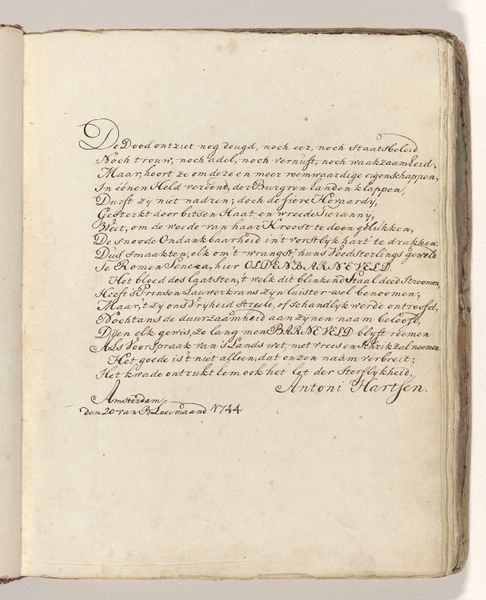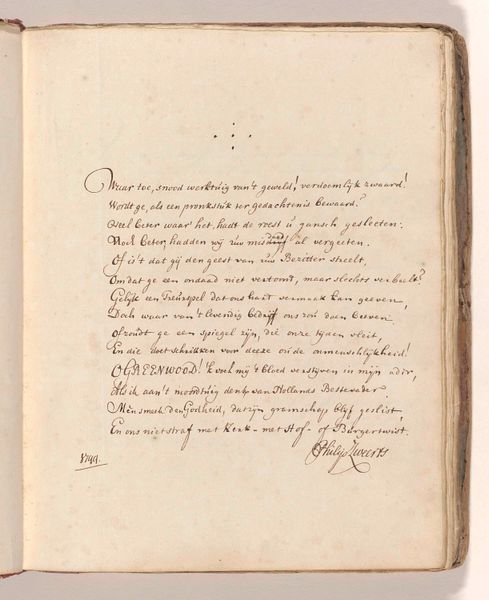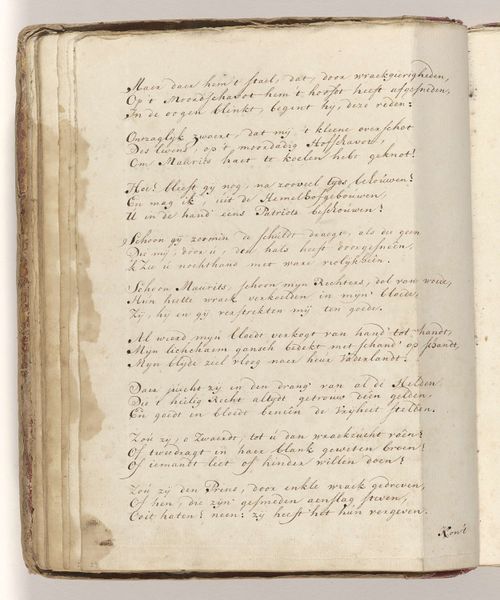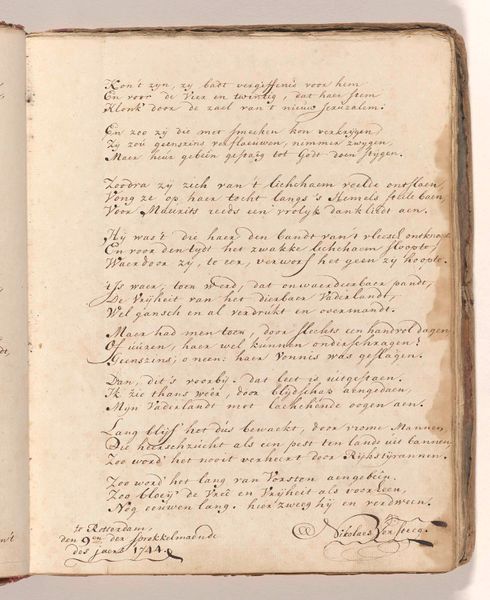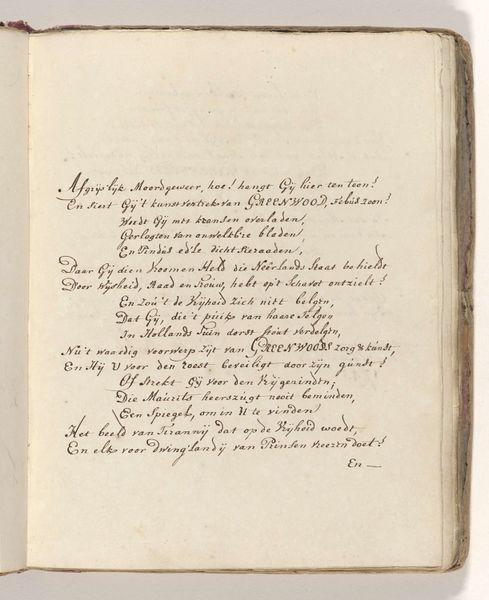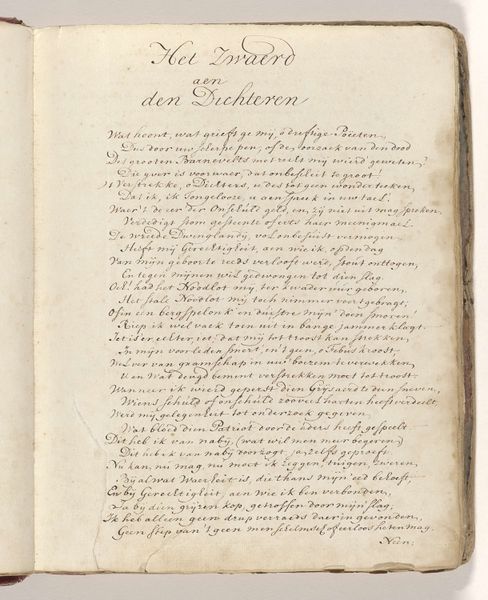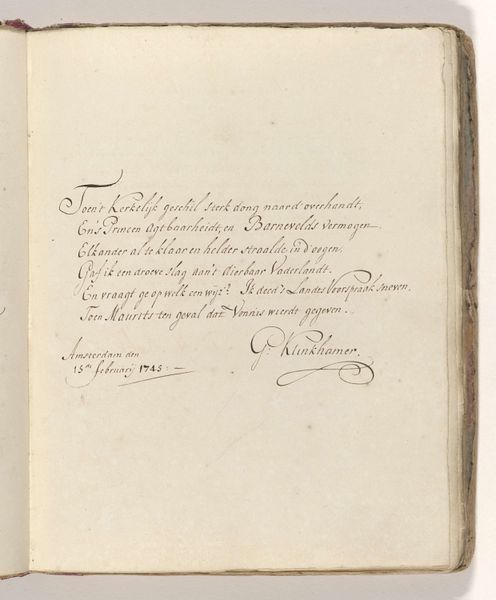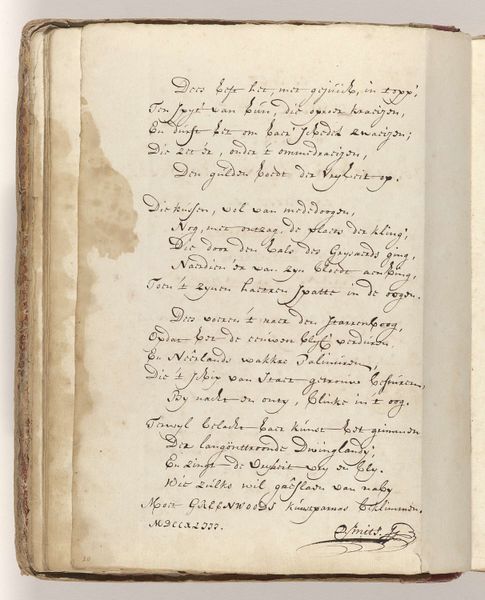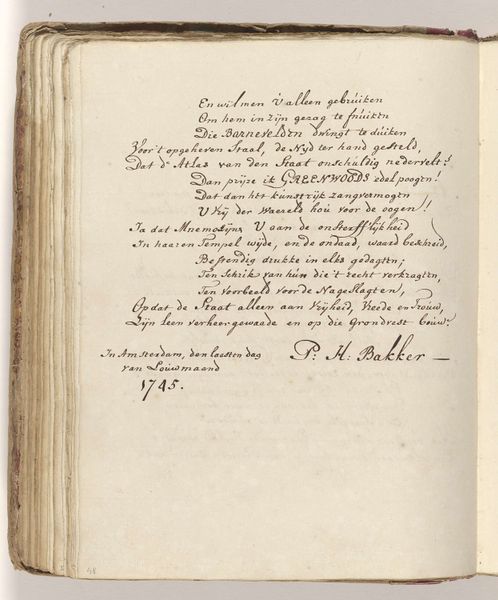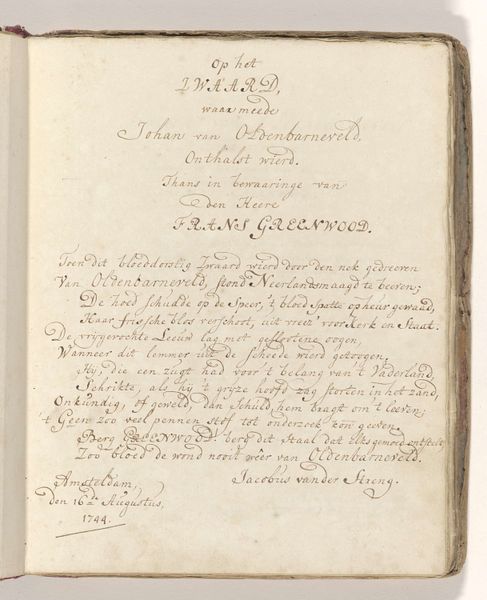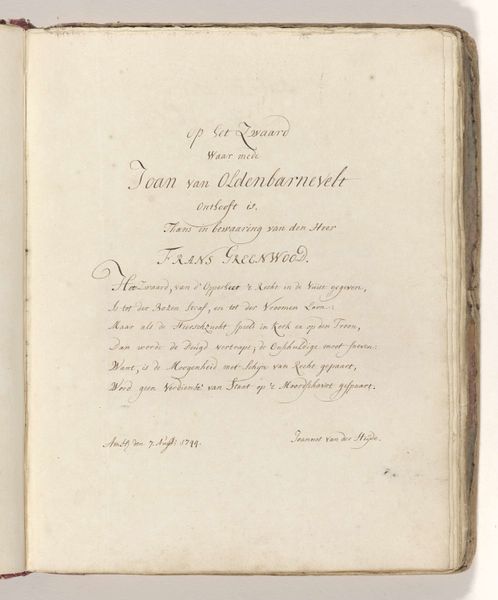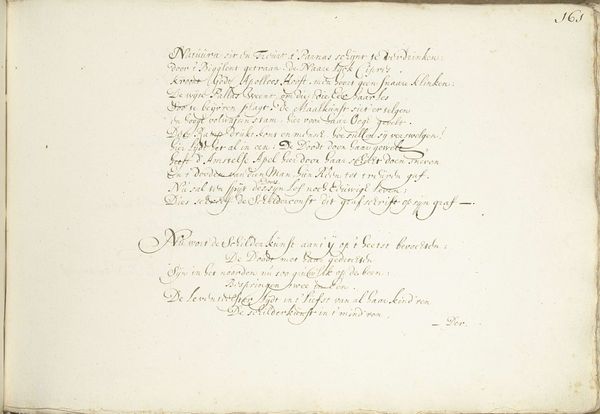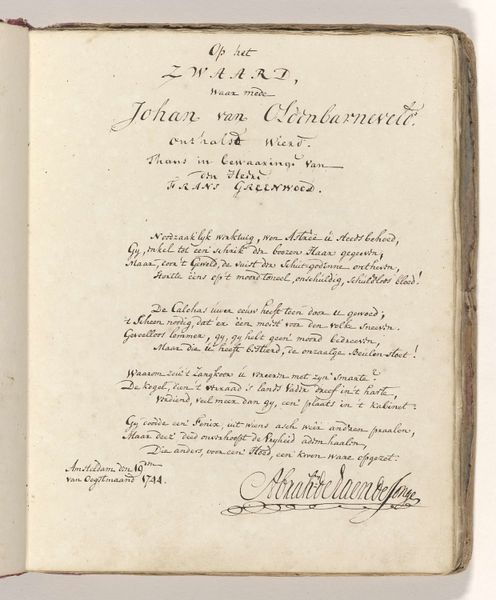
Gedicht op het zwaard waarmee Johan van Oldenbarnevelt in 1619 zou zijn onthoofd Possibly 1744 - 1746
0:00
0:00
drawing, paper, typography, ink
#
drawing
#
narrative-art
#
dutch-golden-age
#
hand drawn type
#
paper
#
typography
#
ink
#
calligraphy
Dimensions: height 275 mm, width 220 mm
Copyright: Rijks Museum: Open Domain
Curator: Let's explore "Gedicht op het zwaard waarmee Johan van Oldenbarnevelt in 1619 zou zijn onthoofd," a drawing possibly from 1744-1746 by A. Hobrink. Editor: So, this artwork is a poem, seemingly handwritten in ink on paper. There's a stark quality to the text itself, and the title references a dark historical moment, the beheading of Johan van Oldenbarnevelt. What can we take away from the connection to this significant event? Curator: Indeed, the historical context is vital. Oldenbarnevelt’s execution was a deeply divisive event in Dutch history, marking a power struggle between different factions. This drawing isn't just a poem; it’s an intervention into how we remember and grapple with political trauma. Think about the choice of calligraphy: it evokes a sense of authority and tradition, yet it’s used here to reflect on injustice. Editor: So the choice of style serves a greater narrative? The formal quality almost amplifies the poem’s sentiment? Curator: Precisely! Consider the poem's themes – justice, betrayal, and the role of leadership. How do these resonate with broader themes of power and resistance? The "sword" in the title is not just a physical object but a symbol of state power, used to silence dissent. What does it mean to create art about that symbol so long after the actual execution? Editor: Perhaps, a call to reflect upon, or perhaps question, the exercise of power even well into the next century. It is interesting that in the 18th Century they were still wrestling with what that execution meant. Is that the artist taking an activist position? Curator: Exactly, Hobrink creates a dialogue across time, prompting viewers to confront uncomfortable truths about their own society, power, and memory. The drawing becomes a space for questioning the narratives we inherit. The artistic choice is a commentary on persistent social imbalances. Editor: That's incredibly insightful. I never thought about calligraphy as having such a direct link to challenging the established historical narrative! Curator: Well, I hope it provided an invitation to think more deeply about art’s role in reflecting—and challenging—dominant ideologies. Editor: I learned a lot from that discussion. Thank you!
Comments
No comments
Be the first to comment and join the conversation on the ultimate creative platform.
